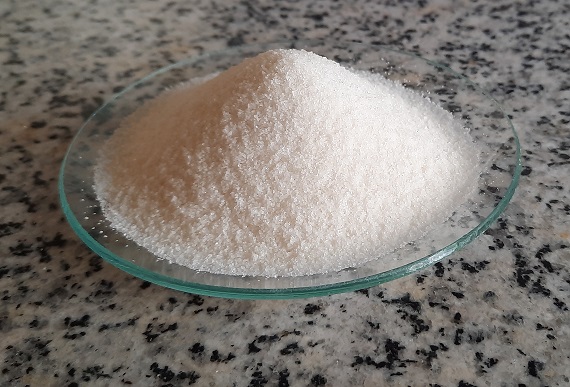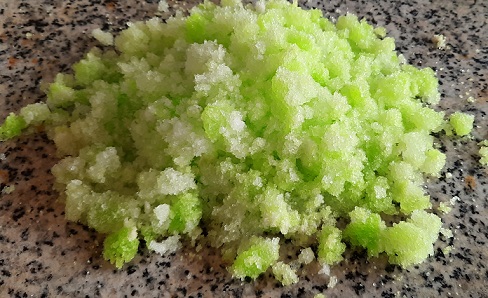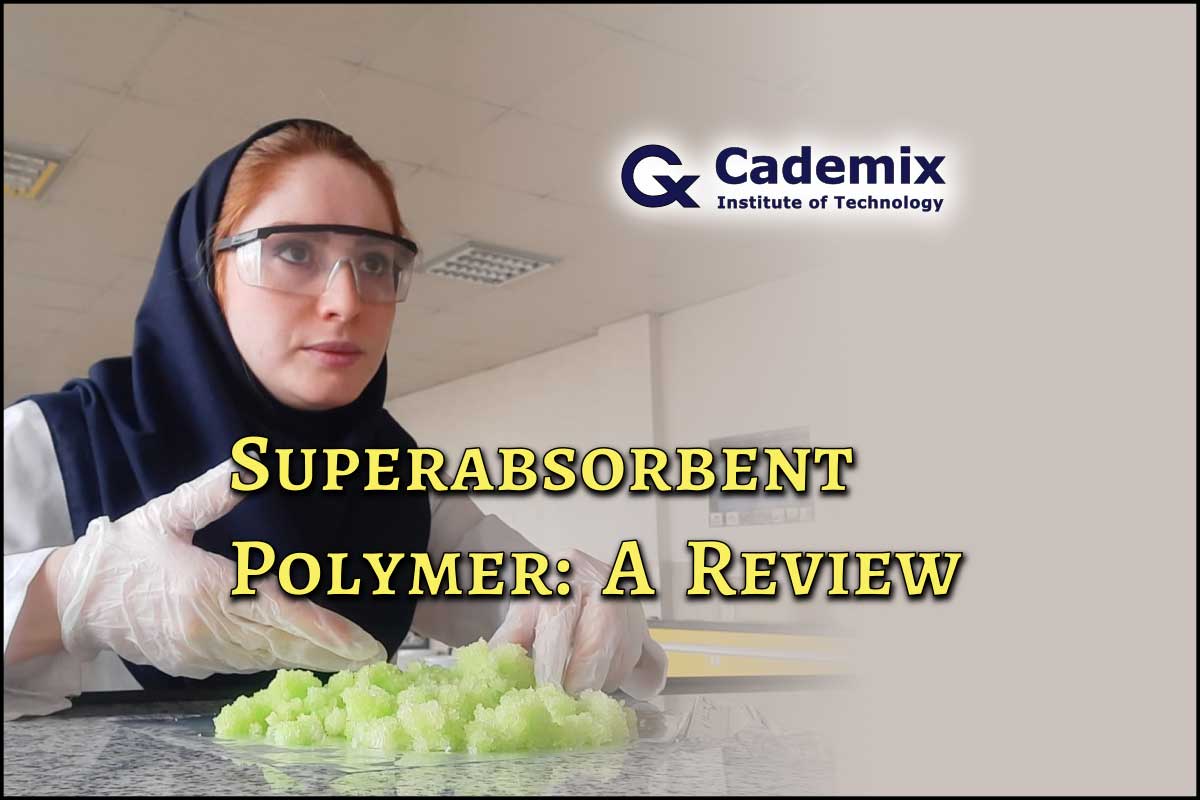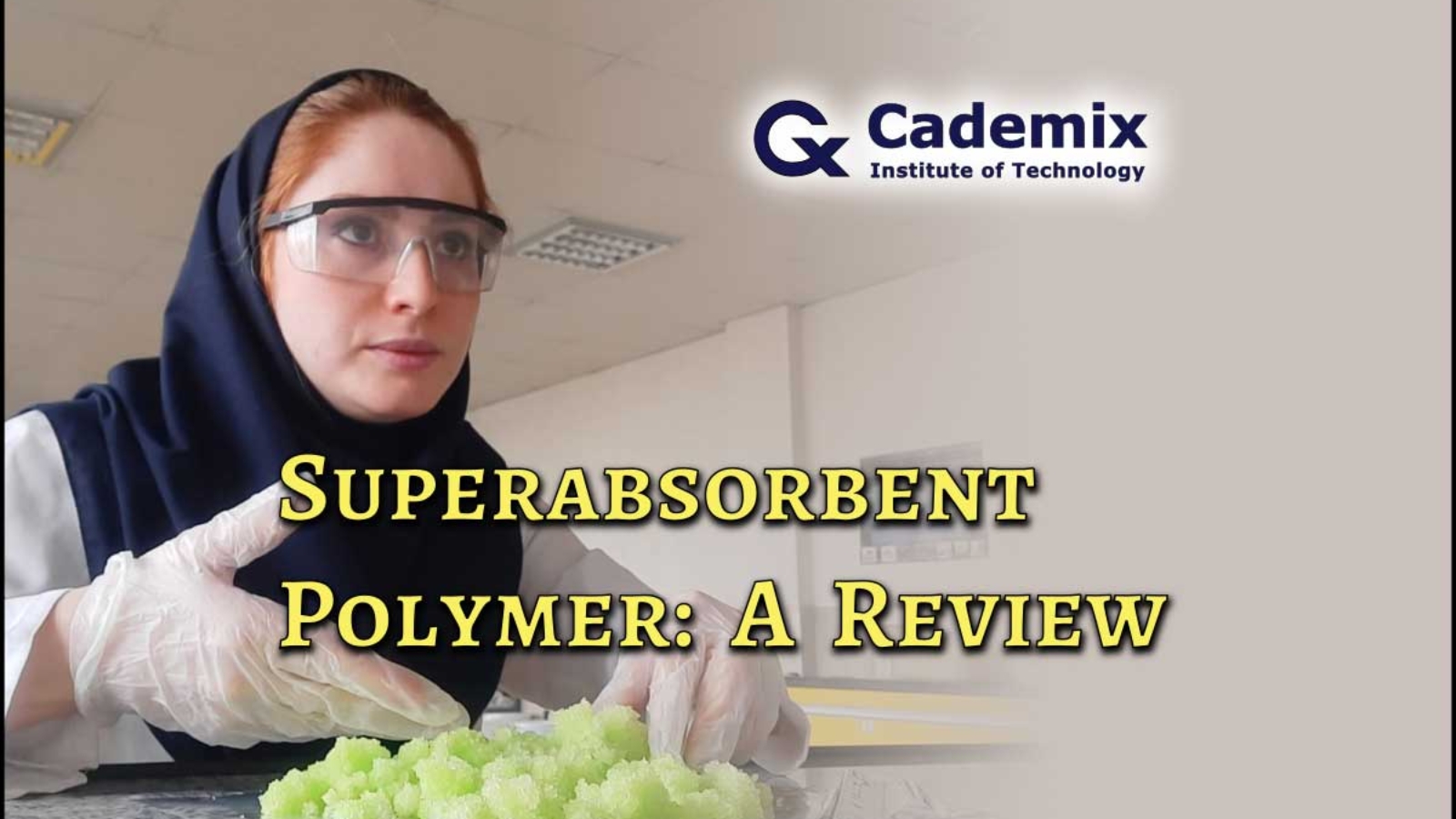Superabsorbent polymer has an important role in sanitary specially baby diaper. In this article we study superabsorbent concept, synthesis approach, quality assay method and their application.
By Maryam Vanaee, Cademix Institute of Technology and Pakshimi Farayand Company.
What is superabsorbent polymer?
Superabsorbent polymers, are substances that can absorb up to 300 times their weight in aqueous fluids. Once absorbed, they do not subsequently release it. As a result, they are an excellent material for use in fluid-containing products such as baby diapers/nappies, incontinence products, and feminine hygiene pads and line. Sodium polyacrylate is the most material that use for producing them and are available in granular or fiber form. In short, the granular material is a polymer composed of millions of identical sodium acrylate units arranged in a chain-fence-like structure. Also, these are then linked together to form a three-dimensional network out of the material. In the other word, the long polymer chains are coiled when dry. They uncoil when they absorb liquid, and the network expands. The liquid is then stored in the molecular network’s spaces, and the material forms a gel that seals the liquid in.

.

What is the application of superabsorbent polymer?
In conclusion, superabsorbent polymer use in three different fields:
- Sanitary: for example baby and adults diapers, sanitary napkins, blood-sucking pads and etc…
- Agricultural application: Proper management of water and soil, reducing water consumption, preventing plant dehydration stress, up to 70% reduction of water consumption and etc…
- Industrial application: for instance cable industries, production of super-resistant concrete, coal mining, deep oil and gas drilling, additives in the production of pastes, production of artificial snow, fire gels, etc.
Type of superabsorbent polymer and their preparation
Classification
Superabsorbent polymer, like the hydrogel family, can be classified based on a variety of factors.
- Electrical Charge
Superabsorbent polymer are classified into four groups. Consequently ,based on the presence or absence of electrical charge in the crosslinked chains :
1. Non-ionic
2. Ionic (including anionic and cationic)
3. Amphoteric electrolyte (ampholytic) with acidic and basic groups
for example, anionic type is the most type of commercial superabsorbent polymer hyrogels.
- Type of monomeric unit
Superabsorbent polymer are also classified based on the type of monomeric unit used in their chemical structure, so the most common SAPs are classified as one of the following:
(a) Cross-linked polyacrylates and polyacrylamides
(b) Hydrolyzed cellulose-polyacrylonitrile (PAN) or starch-PAN graft copolymers
(c) Cross-linked copolymers of maleic anhydride
- Synthetic or natural
However, according to original sources, we can frequently classify superabsorbent polymer into two categories: synthetic (petrochemical-based) and natural. The latter has two types: polysaccharide-based hydrogels and polypeptide-based hydrogels (proteins). Natural-based SAPs are typically created by grafting some synthetic components onto natural substrates, such as graft copolymerization of vinyl monomers on polysaccharides.
- Preparation
The polymerization of acrylic acid neutralized by sodium hydroxide in the presence of a primer results in the formation of sodium polyacrylic acid, or acrylic superabsorbent. Also, sodium polyacrylate is an anionic polyelectrolyte with a negative charge of carboxyl groups in the main chain. The chemical formula of this compound is [-CH2CH (CO2Na)]n.
Factor in determining superabsorbent polymer properties
Superabsorbent polymer Technical Features
The important features of an ideal superabsorbent polymer material are :
- The highest absorption capacity in saline
- Desired rate of absorption
- The highest absorbency under load (AUL)
- The lowest residual monomer
- The lowest cost
- The highest biodegradability
- pH-neutrality
- Colourlessness, odourlessness, and absolute nontoxicity
- Photostability
For example, a hygienic superabsorbent polymer must possess the highest absorption rate, the lowest re-wetting and the lowest residual monomer. on the other hand, for an agricultural superabsorbent polymer the absorption rate is not much necessary; instead it must acquire higher AUL and lowest sensitivity to salinity.
Analytical evaluation
We have mentioned its most important features:
Free-absorbency Capacity
Generally, when we use the terms swelling or absorbency without specifying its conditions; it implies
uptake of distilled water while the sample is freely swollen, i.e., we do not put the load on the testing sample.
There are several simple methods for the free absorbency testing which are dependent mainly on the amount of the available sample, the sample absorbency level, and the method’s precision and accuracy. Above all, one of the simplest method for determine it is teabag method.
Tea-bag Method
This method is the most conventional, fast, and suitable for limited amounts of samples (W0= 0.1-0.3 g)
.Firstly, we have to place SAP sample into a tea-bag (acrylic/polyester gauze with fine meshes) and dip the
bag in an excess amount of water or saline solution for one hour to reach the equilibrium
swelling. Secondly, hang the bag to remove excess solution until no liquid is dropped off. Finally, weight the tea bag and calculate the swelling capacity .
Absorbency Under Load (AUL)
In short we can access the absorbency under load (AUL) data in the patent literature and technical data sheets. When we face the term AUL without specifying its swelling media; it implies an uptake of 0.9% NaCl solution while we have to use some loads on sample (often specified to be pressures 0.3, 0.6, or 0.9 psi). A typical AUL tester is a simple but finely made device including a macro-porous sintered glass filter plate (porosity # 0, d=80 mm, h=7 mm) placed in a Petri dish (d=118 mm, h=12 mm).
Description method
- In the first place, weigh dried SAP sample (0.90±0.01g) and place uniformly on the surface of polyester gauze located on the sintered glass.
- Put a cylindrical solid load (Teflon, d=60 mm, variable height) on the dry SAP particles while it can freely slip in a glass cylinder (d=60 mm, h=50mm).
- After that, place desired load (applied pressure 0.3, 0.6, or 0.9 psi) on the SAP sample .
- Add saline solution (0.9% NaCl) when the liquid level is equal the height of the sintered glass filter ,covered the whole set to prevent surface evaporation and probable change in the saline concentration.
- After 60 min, weigh the swollen particles again, and calculate AUL.
References
Kabiri, K. (2003)39 (7): 1341–1348. doi:10.1016/S0014-3057(02)00391-9.
Snoeck, Didier; Van Tittelboom, Kim; Steuperaert, Stijn; Dubruel, Peter; De Belie, Nele (2012-03-15).doi:10.1177/1045389X12438623. hdl:1854/LU-6869809.
About the Author
Maryam Vanaee with a master’s degree in chemistry in 2017 and immediately entered the related job market. She has worked as a director of research and development at a private chemical company and has piloted many projects, including superabsorbent polymer used in diapers. If you want to know more information please contact me by:

WhatsApp:+9809379080089
Email address: maryam1370.vanaee@gmail.com
linkdin account: maryam.vanaee
Keywords related to Superabsorbent polymer
SAP, Sodium polyacrylate, diapers, Centrifuge Retention Capacity, Absorbency Under Load, Acrylic Acid, agriculture, polymerization, salin solution, powder, hydrogel, water-absorbing polymer, sodium hydroxide,

